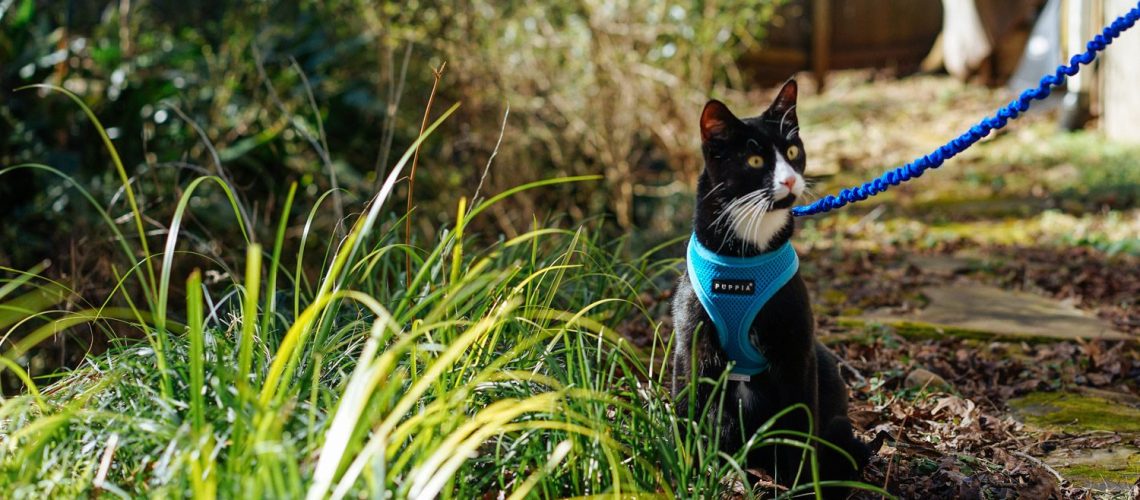Are you tired of your cat constantly scratching at the door, longing to explore the great outdoors? Or perhaps you're simply looking for a way to bond with your feline friend in a new and exciting way. Whatever the reason, leash training your cat can open up a whole world of adventure and enrichment for both you and your furry companion. Not only does it provide mental stimulation and physical exercise, but it also allows you to safely introduce your cat to the wonders of nature while keeping them out of harm's way. So, if you're ready to embark on a journey filled with exploration, curiosity, and unforgettable memories, let's dive into the fascinating world of outdoor adventures: leash training your cat!
Key Takeaways:
- Cats can be leash trained and enjoy outdoor adventures just like dogs.
- Start leash training your cat at a young age to increase success.
- Use a harness specifically designed for cats to ensure their safety and comfort.
- Gradually introduce your cat to the outdoors, starting with short and supervised trips.
- Always keep a close eye on your cat while they are outside and be prepared for any potential dangers or risks.
What is Leash Training for Cats and Why is it Important?
Leash training for cats involves teaching your feline friend to walk on a leash, just like a dog. It allows you to take your cat outdoors safely while keeping them under control. Leash training can be beneficial for both indoor and outdoor cats. For indoor cats, it provides mental stimulation and a change of environment. For outdoor cats, it helps prevent them from wandering too far or getting into dangerous situations.
Leash training is important because it gives you the opportunity to bond with your cat and spend quality time together outside of the house. It also allows your cat to explore the outdoors in a controlled manner, reducing the risk of accidents or encounters with other animals. Additionally, leash training can help reduce behavioral issues in cats by providing them with physical exercise and mental stimulation.
How to Choose the Right Leash and Harness for Your Cat
Choosing the right leash and harness for your cat is crucial for successful leash training. Here are some factors to consider:
Type of Leash:
- A retractable leash gives your cat more freedom to explore but may be harder to control.
- A standard nylon or cotton leash provides better control but limits your cat's range.
Type of Harness:
- An H-style harness is recommended for most cats as it distributes pressure evenly across their body.
- A step-in harness is another option, especially if your cat doesn't like having something put over their head.
When choosing a leash and harness, make sure they are lightweight, adjustable, and comfortable for your cat. It's also essential to measure your cat's girth and neck size to ensure a proper fit.
Initial Steps to Start Leash Training Your Cat
Before you start leash training your cat, it's important to introduce them to the harness gradually. Here are the initial steps:
Step 1: Familiarization with the Harness:
Place the harness near your cat's sleeping area or favorite spot for a few days so they can get used to its presence and scent. You can also reward them with treats when they approach or investigate the harness.
Step 2: Harness Introduction:
Hold the harness open and gently place it over your cat's head, making sure not to force it. Reward your cat with treats and praise for allowing the harness on their body. Repeat this step several times until your cat feels comfortable wearing the harness.
Step 3: Adjusting and Fastening:
Once your cat is comfortable with the harness, adjust it to fit snugly but not too tight. Fasten any buckles or clips carefully, ensuring they are secure but not causing discomfort. Again, reward your cat for tolerating these adjustments.
Gradually Introducing Your Cat to Being Outdoors on a Leash
After successfully introducing your cat to the harness indoors, it's time to take them outdoors on a leash. Here are some steps for a smooth transition:
Step 1: Choose a Quiet Outdoor Area:
Pick a calm and quiet outdoor location where there are minimal distractions or potential dangers for your cat. A fenced backyard or a quiet park can be ideal for initial outdoor adventures.
Step 2: Start Slowly:
Gently walk outside with your cat on a leash, allowing them to explore at their own pace. Keep the leash loose and let your cat lead the way, sniffing and investigating their surroundings. Reward them with treats and praise for positive behavior.
Step 3: Gradually Increase Duration:
Increase the duration of outdoor walks gradually over time. Start with short sessions and slowly extend them as your cat becomes more comfortable. Always watch for any signs of stress or fatigue in your cat and be ready to end the session if needed.
Common Challenges and Solutions in Leash Training Your Cat
Leash training can present some challenges, but with patience and consistency, they can be overcome. Here are some common challenges and their solutions:
Pulling or Refusing to Walk:
If your cat pulls on the leash or refuses to walk, avoid pulling back forcefully. Instead, stop walking and wait for your cat to relax before continuing. Use treats as positive reinforcement to encourage them to move forward.
Anxiety or Fear:
If your cat shows signs of anxiety or fear while on a leash, try using calming techniques such as gentle petting or speaking softly to reassure them. Gradually expose them to new environments and situations while providing plenty of positive reinforcement.
Distractions or Overstimulation:
Cats can easily get distracted by noises, other animals, or unfamiliar scents while on a leash. Redirect their attention using treats or toys to regain focus. Choose quieter areas initially until your cat becomes more accustomed to outdoor distractions.
Ensuring Your Cat's Safety during Outdoor Adventures on a Leash
When taking your cat outdoors on a leash, it's crucial to prioritize their safety. Here are some tips to ensure a safe experience:
Use a Secure Harness and Leash:
Ensure that the harness and leash are properly fitted and secure to prevent your cat from escaping. Regularly check for any signs of wear or damage on the equipment.
Avoid Busy or Noisy Areas:
Avoid crowded areas with heavy traffic or loud noises, as they can stress out your cat. Stick to quieter locations where your cat can feel more at ease.
Watch for Signs of Overheating or Fatigue:
Cats can easily overheat, especially in hot weather. Keep an eye on their behavior, breathing, and overall comfort level during outdoor walks. Provide access to shade and water if needed.
The Benefits of Leash Training for Both Indoor and Outdoor Cats
Leash training offers several benefits for both indoor and outdoor cats:
Mental Stimulation:
Leash training provides mental stimulation by allowing cats to explore new environments, smells, and sights outside of their usual indoor surroundings.
Bonding Time:
Leash training allows you to spend quality time with your cat outdoors, strengthening the bond between you. It also provides an opportunity for interactive play and communication.
Safety and Control:
For outdoor cats, leash training ensures their safety by preventing them from wandering too far or getting into dangerous situations. For indoor cats, it offers controlled access to the outdoors without exposing them to potential hazards.
Physical Exercise:
Walking on a leash provides physical exercise for cats, helping them maintain a healthy weight and reducing the risk of obesity-related health issues.
Overall, leash training can enhance your cat's overall well-being and enrich their life by providing them with new experiences and opportunities for exploration.
In conclusion, leash training your cat can be a fun and safe way to explore the outdoors together. With patience and consistency, you can enjoy outdoor adventures with your furry friend while keeping them secure and protected.
Can you leash train an outdoor cat?
Leash training is generally easier for younger cats, but even older cats can be trained to walk on a leash. It may require more patience for some cats, so it is important to take gradual steps and offer rewards during the harness training process.
Can I train my cat to be an adventure cat?
Training adventure cats requires patience. The crucial step is to take them outside every day, put a harness on them, and go for a walk," says Muñoz. "Repeating this routine daily helps to gradually increase their curiosity each time."
Do cats like walking outside on a leash?
A lot of cats enjoy being outdoors, and one method to ensure their safety is to train them to walk on a leash. Before taking them outside, it's important to acclimate them to wearing a harness. Unlike dogs, many cats have never experienced having something wrapped around their body.
Is it ever too late to leash train a cat?
You can begin by taking your cat on a short walk around the neighborhood and gradually increase the distance as they become more comfortable. It's ideal to start training your cat to wear a harness as early as possible, but it's also never too late to give it a try.
How long does it take to leash train a cat?
It may require a significant amount of time, possibly days or even weeks, to acclimate your cat to wearing a harness. However, once your cat is comfortable with the harness and able to walk normally while wearing it, you can proceed to attach the leash. If your cat is unable to adjust to the harness, that is perfectly fine, and you can still have an enjoyable indoor experience instead.
What age can you leash train a cat?
According to Laura Moss, editor-in-chief of AdventureCats.org, kittens, particularly those younger than one year old, are more receptive to leash training. Moss suggests that this may be due to their natural curiosity as kittens.

















